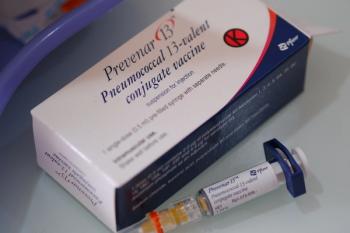
Computer Model Helps Researcher Predict Regional Disease Burden
A new computer model can help researchers predict the regional areas where vaccines are needed most.
In a new study published in eLife, researchers used a specially developed model to estimate the regional disease burden of Japanese encephalitis (JE), a viral infection of the brain transmitted by mosquitos.
The model also helped researchers determine the effect vaccination would have in different regions to determine where vaccination efforts would make the biggest impact.
"Estimating regional burden means that it is possible to determine where the burden is high enough in order for vaccination to be considered,” researcher Hannah Clapham, PhD, MSc told Drug Topics®.
Clapham was a mathematical epidemiologist at the Oxford University Clinical Research Unit, Wellcome Trust Asia Program in Vietnam when the study was conducted and now is an assistant professor at NUS Saw Swee Hock School of Public Health in Singapore.
JE can be a difficult disease to track because only a small number of those infected are symptomatic. Those who are symptomatic are at a greater risk of death and many who survive are often left with considerable neurological and psychological systems.
"In terms of clinical care, many individuals who have a symptomatic infection with JE, but do not die, have severe longer-term disability,” Clapham said. “Understanding where infections of JE happen can therefore help with targeting of resources for supporting people who are suffering from the long-term impacts of a JE infection.”
Vaccination options exist to treat the disease, but it’s often difficult to estimate the impact of the disease and vaccination efforts with surveillance alone, Clapham said.
The computer model developed by investigators overcomes some of the limitations of sparse and variable surveillance data and provides a better sense of where to target vaccination efforts.
As part of the study, researchers reviewed the available case data on JE cases and grouped the data by age. Then using this data, researchers calculated what they called a Force of Infection (FOI), which showed the intensity of transmission within various regions.
Next, researchers used this FOI value to determine the disease burden in a particular area with and without data on vaccination programs, giving researchers a better sense of the impact vaccination had on a given area.
Clapham believes using the model to determine the regional disease burden in an area, could help identify the best areas to introduce a vaccine.
“For countries where we identified additional vaccination would be of use, further discussion will be needed with policymakers to determine the reasons for current vaccination uptake,” she said. “With information on these reasons, strategies can be developed to increase vaccination. We hope to engage with in-country policymakers as much as possible to further develop our work to be able to support these kinds of decisions."
Although researchers focused on the impact of JE in this latest study, Clapham said modeling can be effective in other disease states as well.
“The models used vary, depending on factors of disease, including how it is transmitted, and on the data available on case numbers, but modelling can be a useful approach to estimate burden for a number of infectious diseases,” she said.
Reference
Quan TM, Thao TTN, Duy NM, Nhat TM, Clapham H. Estimates of the global burden of Japanese encephalitis and the impact of vaccination from 2000-2015. eLife. 2020;9:e51027. Doi:
Newsletter
Pharmacy practice is always changing. Stay ahead of the curve with the Drug Topics newsletter and get the latest drug information, industry trends, and patient care tips.





























































































































